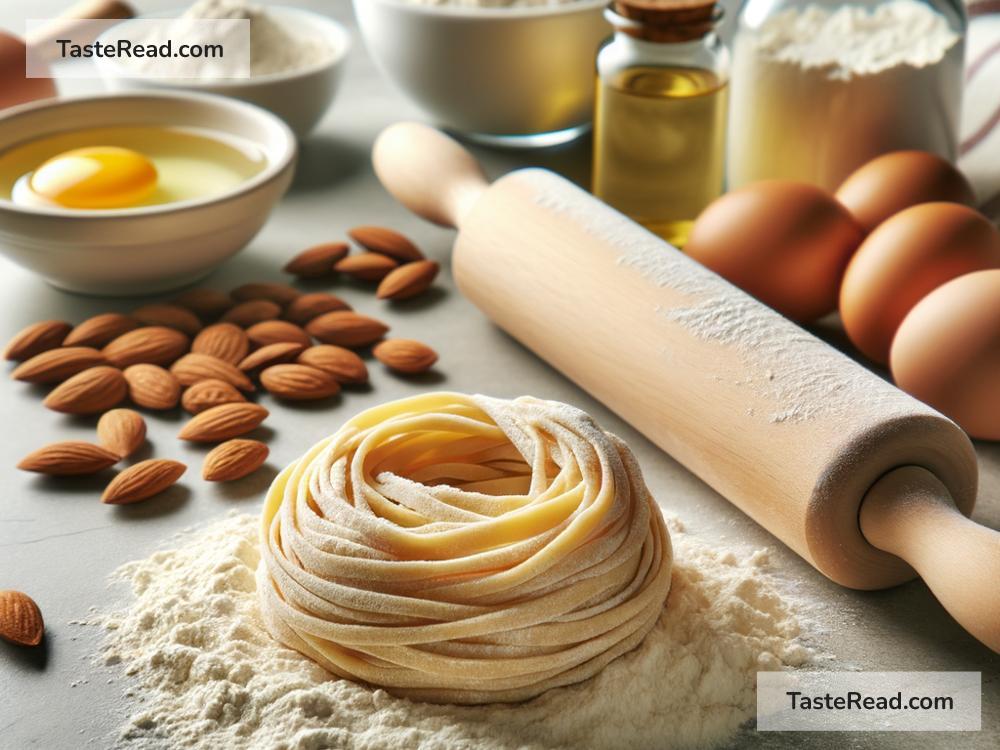How to Make Gluten-Free Pasta from Scratch
For those who follow a gluten-free diet due to celiac disease, gluten sensitivity, or by choice, missing out on pasta can feel like a major sacrifice. But there’s good news: making gluten-free pasta from scratch is not only possible, it’s also quite simple and the results are deliciously rewarding. In this article, we’ll walk through the steps to create your very own gluten-free pasta at home, using ingredients that are readily available.
Ingredients You’ll Need:
- 1 cup of gluten-free all-purpose flour (make sure it’s a blend designed for baking for best results)
- 1/4 teaspoon of xanthan gum (if your flour blend doesn’t already include it)
- A pinch of salt
- 2 eggs
- 1 tablespoon of olive oil
- Water (as needed)
Tools:
- A mixing bowl
- Fork or dough whisk
- Pasta roller or a rolling pin
- Knife or pasta cutter
- Cutting board
Step-by-Step Guide:
1. Combine Dry Ingredients
Start by taking a mixing bowl and adding your cup of gluten-free all-purpose flour. Make sure to level it off for an accurate measurement. If your flour blend doesn’t already contain xanthan gum, add 1/4 teaspoon of it along with a pinch of salt. Xanthan gum helps mimic gluten’s elasticity, which is key in pasta.
2. Add Wet Ingredients
Create a well in the center of your flour mixture and crack the two eggs into it. Add the tablespoon of olive oil. Olive oil not only enriches the flavor but also adds moisture, making the dough more manageable.
3. Mix and Knead
Using a fork or a dough whisk, start incorporating the eggs and oil into the flour. Initially, it’ll look a little crumbly—don’t worry; it’ll come together. When it starts forming a dough, dust your hands with some gluten-free flour and start kneading. Knead for about 5 to 8 minutes. If it feels too dry, add a teaspoon of water at a time until it becomes smooth.
4. Rest the Dough
Form the dough into a ball and wrap it in plastic wrap. Let it rest for at least 30 minutes at room temperature. This step is crucial as it allows the xanthan gum to activate and give the dough its needed elasticity.
5. Roll Out the Dough
Once the dough has rested, it’s time to roll it out. If you have a pasta roller, that’s great! If not, a good old rolling pin will do just fine. Divide the dough into 4 equal parts for easy handling. Take one part (keep the others covered to prevent drying) and start rolling it out on a lightly floured surface. Aim for a thickness of about 1/16th of an inch. Remember, gluten-free dough might not be as stretchy as its gluten-filled counterpart, so be gentle to avoid tearing.
6. Cut Your Pasta
After rolling the dough, you can cut it into your desired pasta shape. Whether you’re craving fettuccine, tagliatelle, or simple strips, a sharp knife or a pasta cutter will do the trick. If the dough sticks, dust it lightly with more gluten-free flour.
7. Cooking Your Pasta
Bring a large pot of salted water to boil. Gently drop your pasta into the boiling water and cook for about 2-4 minutes. Gluten-free pasta cooks quicker than regular pasta, so keep an eye on it. Once it’s al dente (still has a bit of bite to it), drain the pasta but save a cup of the pasta water.
8. Serve and Enjoy
Toss your freshly cooked pasta with your favorite sauce. If the sauce is too thick, you can use some of the pasta water you saved to thin it out. Serve immediately and enjoy the fruits of your labor!
Tips for Success
- Experiment with Flour Blends: Different blends will yield different textures and flavors, so don’t be afraid to experiment.
- Be Gentle: Gluten-free dough is more fragile than traditional pasta dough, so handle it with care.
- Keep It Lightly Floured: To prevent sticking, keep your work surface, rolling pin, and hands lightly floured during rolling and cutting.
Making gluten-free pasta from scratch might seem daunting at first, but with a little practice, you’ll find it quite straightforward. This homemade pasta not only tastes great but also brings the joy of pasta back to those on a gluten-free diet. Happy cooking!


